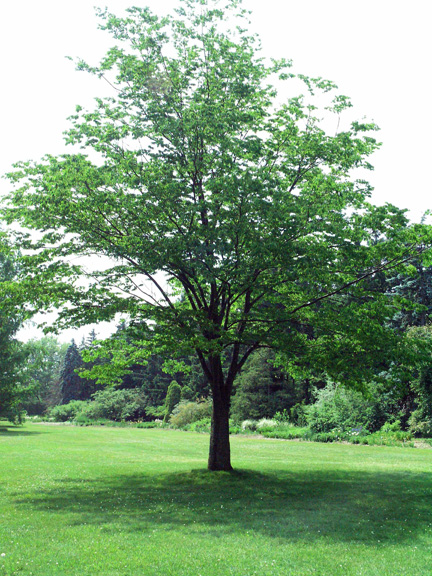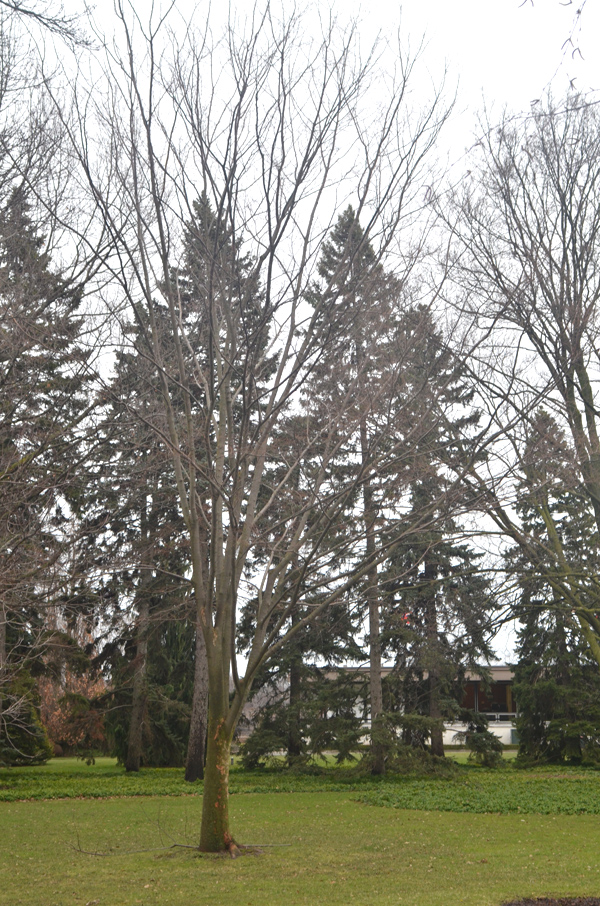
Woody > Zelkova > Zelkova serrata > Zelkova serrata
Zelkova serrata
Japanese Zelkova, Japan: Keyak, China: Ju shu, Korea: Neutinamu
Origin: Zelkova serrata has the widest distribution of its genus. In Japan, it is found south of Kyushu Island to the far north of Honshu Island. It is widely distributed in China, found in many provinces such as Fujian, Gansu, North Guangdong, Guizhou, Henan, Hubei, Hunan, Jiangsu, Jiangxi, Liaoning, Shaanxi, Shandong, Sichuan and Zheijiang. It is also found on the island of Taiwan, in North and South Korea and possibly (unverified) on Russia's Kuril Islands. The species is listed on the IUCN Red List of Threatened Species.
Mike's
Opinion


"
A gorgeous, low-maintenance tree ideally suited to street and avenue planting particularly where the American Elm has failed due to Dutch elm disease.
Michael Pascoe, NDP., ODH., CLT., MSc. (Plant Conservation)
"
| Family |
| Ulmaceae |
| Genus |
| Zelkova |
| Species |
| serrata |
| Category |
| Woody |
| Type |
| Tree (deciduous) |
| Pronunciation |
| USDA Hardiness Zone |
| 6b - 7a |
| Canadian Hardiness Zone |
| 6a - 6b |
| RHS Hardiness Zone |
| H6-H7 |
| Temperature (°C) |
| -21 - (-15) |
| Temperature (°F) |
| -5 - 5 |
| Height |
| 15 - 30 m |
| Spread |
| 12 m |
Photographs
Description and Growing Information
Flowering Period
| General Description |
| Zelkova serrata is a large deciduous tree with leaves and form similar to Ulmus americana. |
| Landscape |
| Its high branched structure and relative pest resistance make it ideally suited to street planting. Could also be used in urban parks or as an avenue tree. |
| Cultivation |
| Prefers a moist soil that is freely draining. Can thrive in soils with a high pH. |
| Shape |
| Vase-shaped. |
| Growth |
| Fast |
| ID Characteristic |
| The tree has a high branched 'V'-shaped form, sharply serrated leaves and exfoliating bark. |
| Habitat |
| Typically found growing in a mild climate in limestone-rich valleys where the soil is moist. Since it has a very deep, wide-spreading root system it is quite wind resistant and thus can be found growing on more exposed locations within its geographic distribution. It is found in lowland forests between 500 and 3,000 m in ravines, riparian habitats and shaded slopes growing in association with Acer japonicum, A. mono, Aesculus turbinate, Castanea crenate, Celtis jessoensis, Juglans ailanthifolia, Pterocarya rhoifolia, Quercus serrata and shrubs and vinces such as Calicarpa japonica, Cornus contrivers, Kerria japonica, Wisteria floribunda and Sasa senanensis. In its most southern range, Tawain, associated species include Carpinus kawakamii, Quercus variabilis, Q. tarokoenis, Ulmus parifolia, Dodonaea viscose and several species of Acer. |
| Bark/Stem Description |
| Cherry-like and heavily lenticelled (having raised pores in the stem) when young. Greyish white to grey-brown upon ageing and exfoliating, similar to the Chinese Elm. |
| Flower/Leaf Bud Description |
| Shiny dark brown, 6 mm long, diverging from the stem at a 45° angle, somewhat sharply pointed with broad, overlapping scales. |
| Leaf Description |
| Medium to dark green, elliptic to ovate-lanceolate, up to 10 ? 5 cm with a serrate to crenate margin and 9 - 15 secondary veins, smooth (glabrous) with the lower surface slightly pubescent (covered with short soft hair) along veins. |
| Flower Description |
| Creamy-white to pale green, not ornamental. Trimonoecious: flowers are in sequence on a short shoot with the female flowers 2 mm in diameter and male flowers 3 mm across. Flowers are borne in April with leaf emergence. |
| Fruit Description |
| Drupes are 3 - 4 mm in diameter, crossed with a series of low ridges, bean-shaped, pea green in colour and mature from September through November. |
| Colour Description |
| Foliage is orange-brown in autumn, sometimes deep red to reddish purple. Bark is grey-white when young maturing to brown-grey. |
| Notable Specimens |
| The Gardens of Fanshawe College, London, Ontario, Canada. |
| Propagation |
| Seeds germinate best when stratified at 5°C for 60 days. Rooting cuttings from seedlings can be very successful: treat with 1000 ppm IBA. |
| Ethnobotanical Uses (Disclaimer) |
| The densely grained, rot-resistant wood is used in construction, shipbuilding, fine furniture and the production of tool handles. Recently, compounds have been extracted from the twigs that have the potential for use in the treatment of cancer. |

.jpg)
.jpg)
.jpg)
.jpg)

